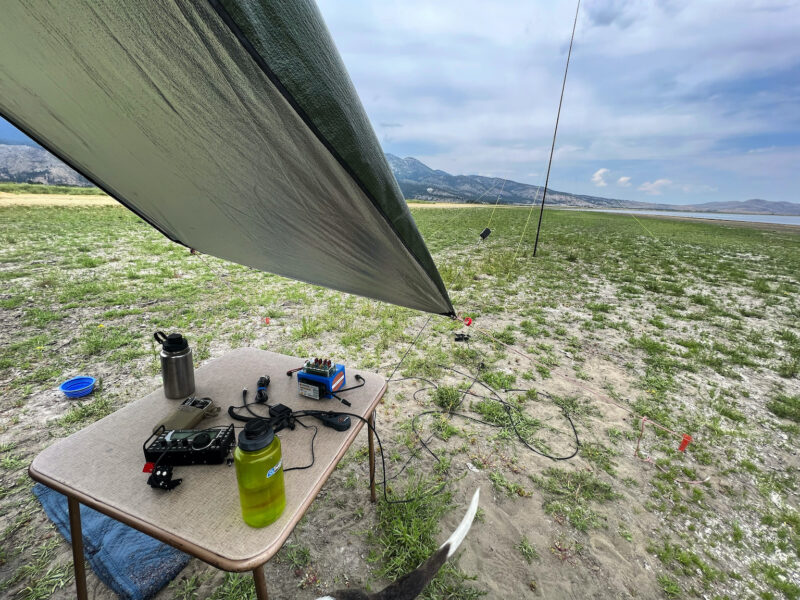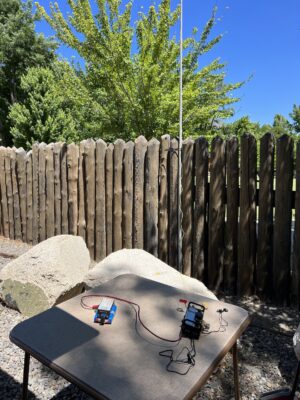
This year, 2022, was my first Flight of the Bumblebees contest. This is a QRP (low power, usually 5w for CW mode) and has been going on for a number of years.
I planned to work the contest for the last few weeks. I decided to operate in the field (of course) from Washoe Lake State Park, which is also a Parks-on-the-Air park (K-2640). I often activate the park as it is only a short drive from my home and The Girl and I love to walk there. It is a win-win for both of us.
I picked up my friend, Diana (KJ7GVY) about 0900h and we made the short drive up to Washoe Lake. I prefer to operate on the west side because the take-off angles are better and there are a lot fewer people. We picked a spot and started setting up the equipment.
I elected to hang a tarp over the back of the 4Runner to provide extra shade as it has been very hot in the afternoons here. Although there was overcast, the wind was down and the humidity was up. By the time we got the station set up, I was quite soaked in sweat. This is unusual for me.
The station was my Elecraft KX3 at five watts to an end-fed half wave antenna. The antenna is built on a Balun Designs 49:1 matching transformer, but I cut the wire and counterpoise for the antenna and tuned them.
Aside: I have in mind another design for an EFHW. After reading a paper on these antennas, it seems that a 36:1 matching transformer with a 200pf capacitor about a third of the way from the feed point will make a 40m EFHW work better on the upper bands. I am going to try one. I just about have everything I need to build the transformer and radiating elements.
I think I started operating about 1030h local. I heard nothing on 40m. I was hoping for some California and close-in Oregon stations, but nothing heard. The 20m band had quite a few operators around 14.060MHz. I chased a couple of them and then looked over at my friend.
“I’m going to run a frequency. I think I’ll do better if I just pick and place and go.”
So I found a place about 14.062MHz and started calling CQ CQ BB de AG7TX AG7TX/BB AR. After a few calls I started picking up some callers and worked them as I could. I am still learning CW and CW operating practice. This was the first time I ran a frequency in a CW contest.
But all the practice running a frequency for POTA and SOTA activations paid off. I picked off call signs or fragments and worked the callers. It is such good brain work and I had a blast.
Each time the well ran dry, I would check another band. I worked a friend on 40m, but I’m confident he was running more than five watts. I also worked him on 20m, but he never got below 20w. So he does not count for the contest (but will get a POTA credit).
The 20m band was the band to work here in western Nevada. I made a total of 35 contacts, dropping those that I did not get a power from or that I new were operating more than five watts. This included 19 Bumblebees.
After the contest ended, we walked The Girl a bit. Then we headed back to Carson City and made a stop at the Sonic. The chili dog and shake just topped off the day. The Girl got a few tater tots for her contributions as well.
I had a blast. It was a good day. Life is good.
